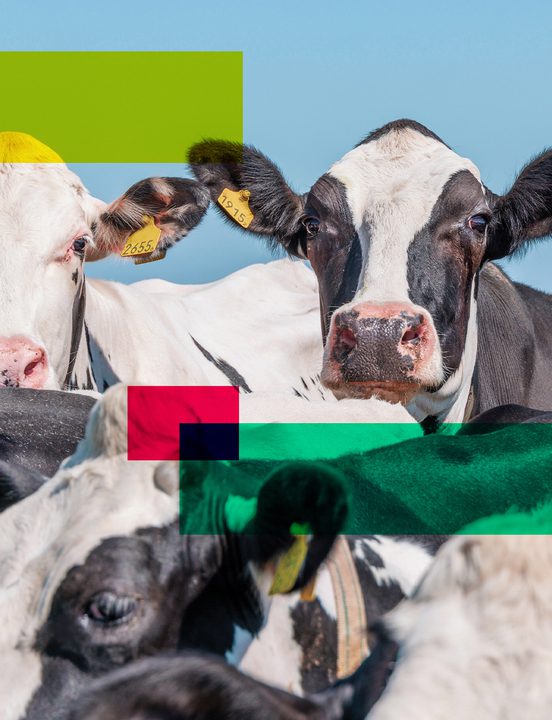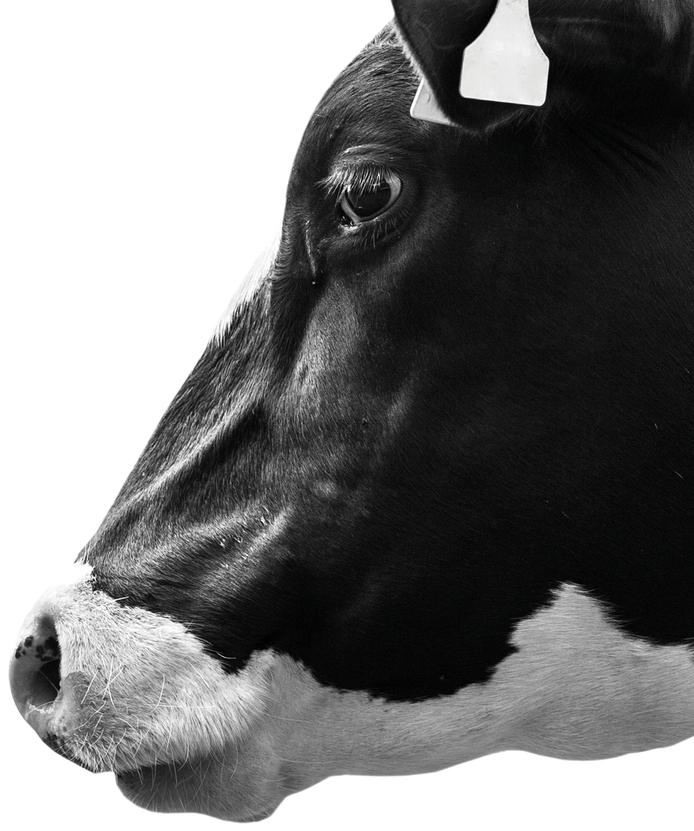BVD
learn more
What is BVD?
Bovine Viral Diarrhoea (BVD) is a widespread, highly contagious viral disease of cattle, usually spread by direct cattle-to-cattle contact.
It has big financial implications to the herd, estimated to cost between £13 and £31 per cow in Great Britain. The national cost could be as high as £61M per year (Bennett and Ijpelaar, 2005). This is down to the cost to control and long-term implications to cow health and welfare, such as causing abortion, infertility, immunosuppression, failure to thrive and even death.
Farmer to Farmer
Clinical Signs
- Youngstock not thriving.
- Higher than expected infertility.
- Unexplained abortions, stillbirths or birth defects.
- Scours and pneumonia in youngstock.
- Calves struggling to recover post-treatment.
Prevention and Management
- Vaccination (please consult your farm vet).
- Identifying and removing PI’s from a herd and preventing the production of new PI’s
- Biosecurity measures such as ensuring boundaries with neighbouring farms are secure.
What Testing Options Are Available For BVD?
Speak to your vet about the best way to manage BVD and the most appropriate testing options.
Herd Screening Tests:
Bulk Milk
These tests can be carried out using the bulk milk payment testing samples
Youngstock Screen
Test for antibodies and look for exposure to BVD.
Management and Control Tests:
Tag & Test (T&T)
Test every calf at birth as they are tagged.
Individual Animal Antibody Testing
This can be carried out on blood samples or using the milk samples taken at milk recording
BVD HerdCheck Surveillance Program - Bundled Testing Options
Dairy HerdCheck
Dairy HerdCheck uses a quarterly screen of milk bulk samples and 10 antibody blood tests.
Request a Quote
Once you have spoken to your vet about the testing option suitable for your herd, contact us for a free quote.
NMR, in conjunction with UK vets, have developed 3 bundled services that make use of NMR’s testing capabilities and the best scientific advice.
All the above schemes are CHeCS approved, use the latest testing technology, are simple and reliable, with comprehensive reporting back on-farm through the web (Herd Companion).
Third parties (vets) have access to the data if permission is given, using the web services. All results are uploaded to the relevant national scheme (BVD Free England, Gwaredu BVD, AHWNI and ScotEID).
Frequently Asked Questions
In calves, it is poor health such as low birth weight, calf death and respiratory disease.
In cows, signs include poor fertility, poor conception rates and a high number of returns to service.
- A PI calf is born after its dam becomes infected with BVD during pregnancy.
- A PI calf remains infected with BVD throughout its entire life.
- PI animals spread the virus when in nose to nose contact with other cattle.
- They will shed the virus for their entire life.
- When PIs are identified, they should be culled immediately.
The virus is contracted from contact with infected cattle and sexual transmission. Animals infected as adults usually recover and become immune.
However, if a cow is infected with BVD within the first 120 days of pregnancy, the virus is readily transmitted across the placenta from cow to calf. This means those born will be permanently (persistently) infected with the virus. They are termed persistently infected (PI) as they excrete large volumes of the virus throughout their lives and are the main source of infection.
Although some PI calves fall ill and die early, other PI’s can look completely normal and even survive to have calves of their own, perpetuating the problem in a herd.
Vaccination plays an important part in controlling BVD on farm but will not eliminate BVD on its own. If you have BVD in your herd, you need to find the PI’s through testing and remove them as soon as possible to eradicate BVD. Vaccination of a PI calf will have no effect on the amount of virus that is shed.
In herds with BVD infection present, losses are estimated at between £20 and £80 per cow per year. Research shows that for every £1 you spend on BVD control you will see a £10 return on investment. Farms which have tackled the disease have seen vast improvements in fertility and calf health.
The most commonly used methods for BVD surveillance are bulk milk antibody and/or virus (PCR) testing and youngstock antibody screening. Both take a snapshot to see if there is any evidence that BVD is within the herd.
If you know you have BVD and are looking to eradicate it, there are several options available for PI hunts and you should work with your vet and laboratory to decide on the most cost effective method.
Always speak to your vet before undertaking any testing.
